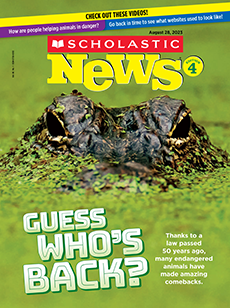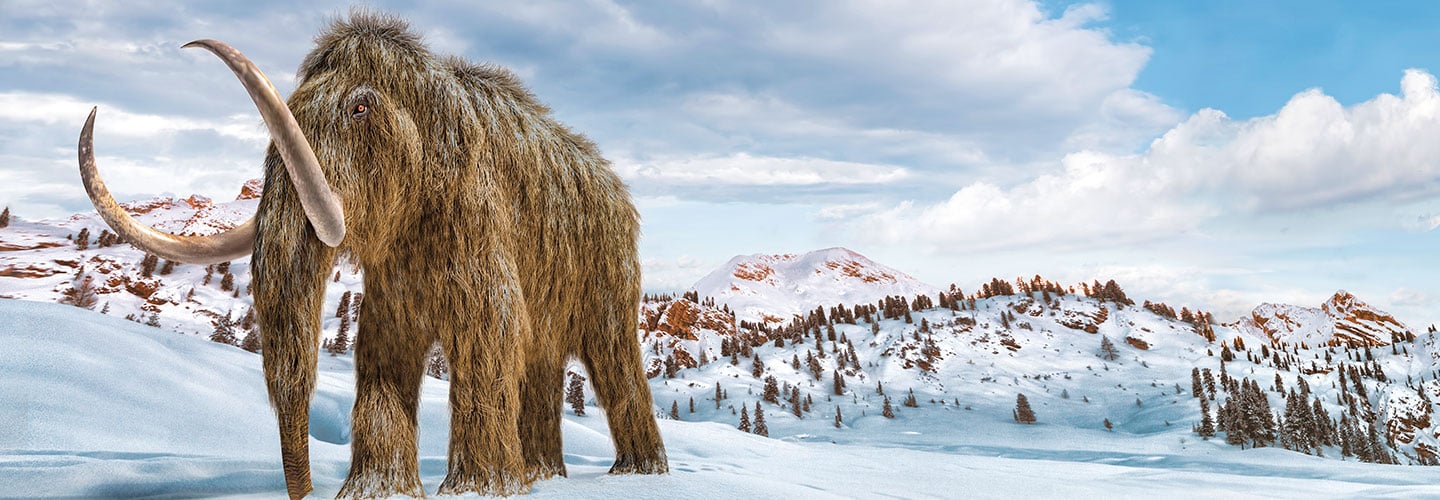Woolly mammoths were huge, hairy elephant-like creatures. Most mammoths became extinct nearly 10,000 years ago. But what if they came back from the dead? It may sound like a scene from a zombie movie, but it could soon be a reality. A company called Colossal plans to bring woolly mammoths back from extinction within the next few years.
Colossal will use a process called de-extinction. They’ll take DNA from a frozen mammoth. DNA is the material in cells that determines how living things look and function. Scientists will copy the DNA into the cells of the mammoth’s closest living relative, the Asian elephant.
Some people think it would be exciting to see prehistoric creatures roam the planet again. But many scientists are concerned that de-extinction could cause more harm than good.
Woolly mammoths were huge, elephant-like creatures. Most mammoths became extinct nearly 10,000 years ago. But what if they came back? It may sound like a scene from a zombie movie. But it could soon be a reality. A company called Colossal plans to bring woolly mammoths back from extinction within the next few years.
Colossal will use a process called de-extinction. They’ll take DNA from a frozen mammoth. DNA is the material in cells that determines how living things look and function. Scientists will copy the DNA into the cells of the Asian elephant. That's the mammoth’s closest living relative.
Some people think it would be exciting to see prehistoric creatures roam the planet again. But many scientists worry that de-extinction could cause more harm than good.

